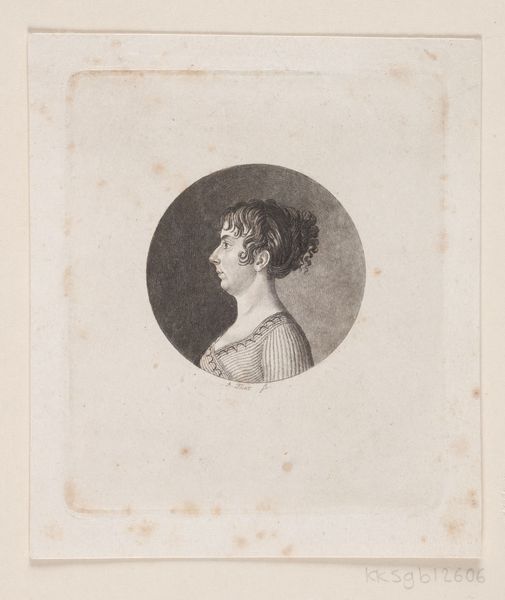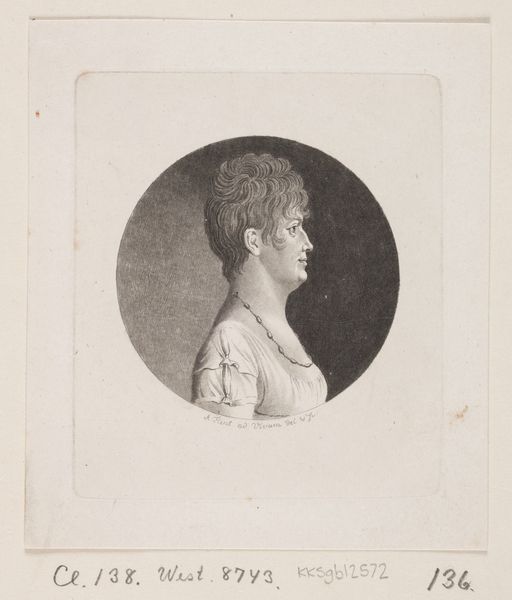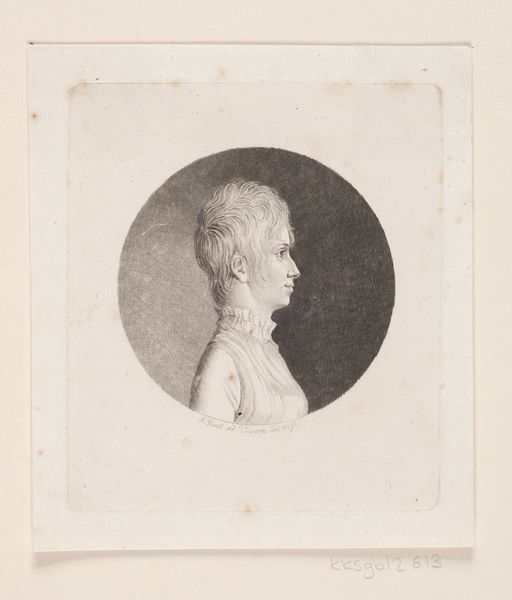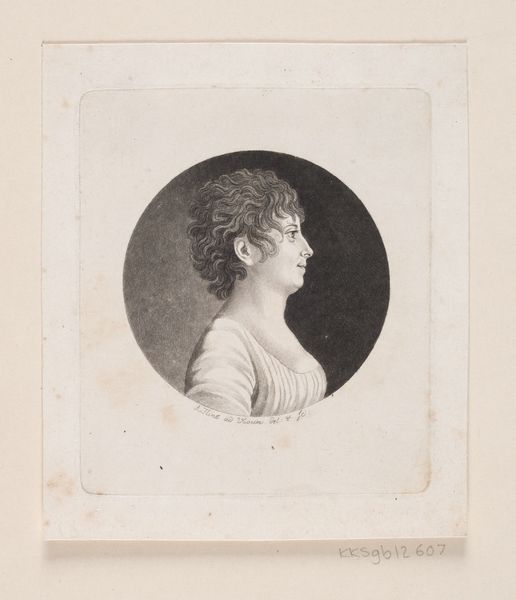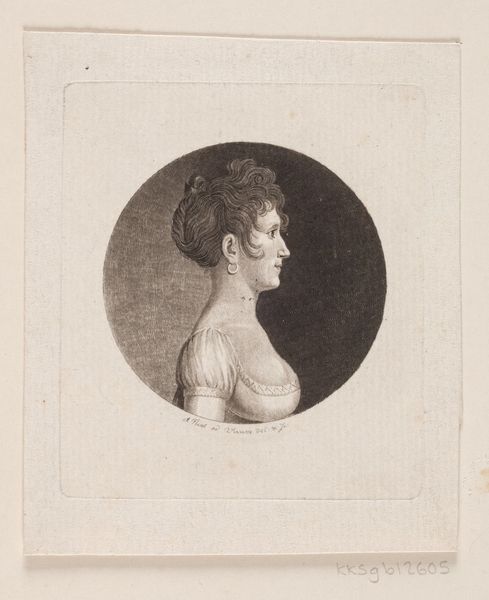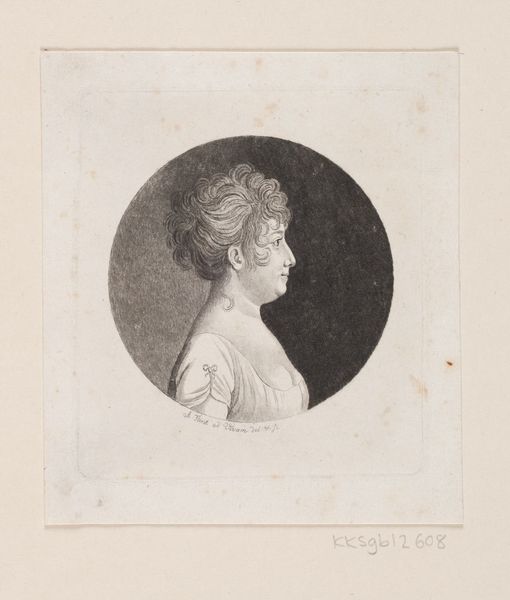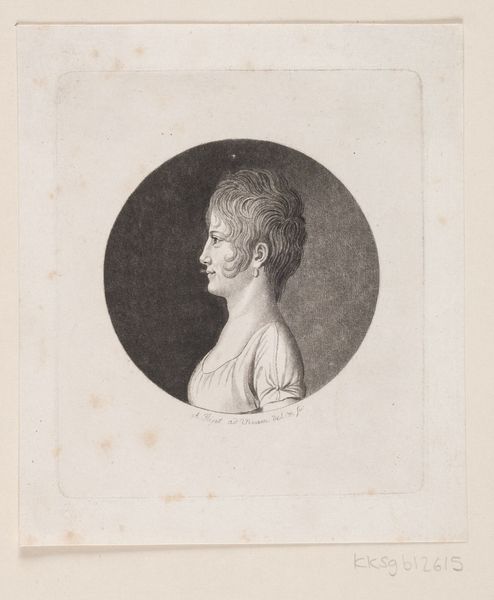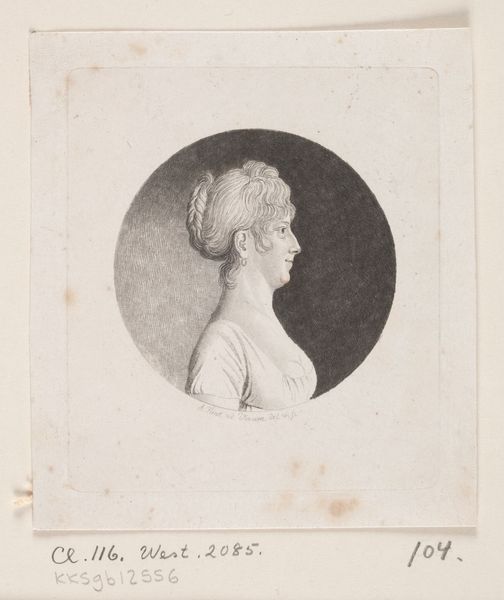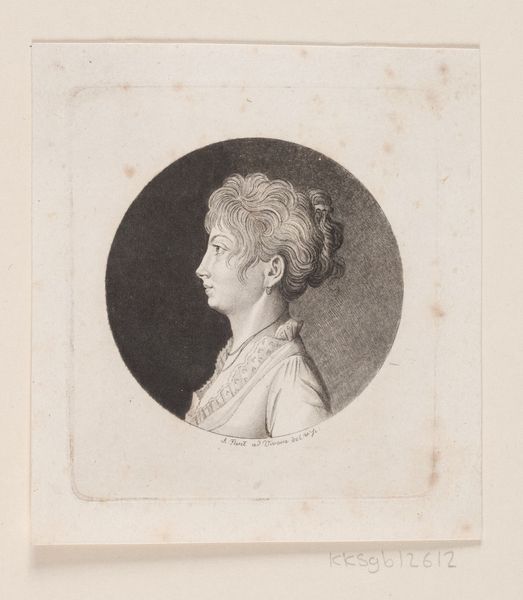
drawing, print, engraving
#
portrait
#
pencil drawn
#
drawing
#
neoclacissism
# print
#
portrait reference
#
pencil drawing
#
engraving
Dimensions: 55 mm (None) (billedmaal), 95 mm (height) x 82 mm (width) (plademaal)
Curator: This unassuming little engraving hits me right in the solar plexus! It's simultaneously soft and strong, melancholic and deeply present. Editor: We're looking at an early 19th-century portrait from SMK, Statens Museum for Kunst, a depiction rendered with the crisp lines and balanced forms of Neoclassicism. Though its title is simply, "Unknown Woman's Portrait," dating roughly from 1767 to 1824, the image itself speaks volumes. What strikes you so immediately? Curator: Her expression is arresting! A delicate downturn of the lips suggests hidden stories, perhaps societal constraints on women during that period? The way her hair frames her face, those little curls, lends such humanity. And that sharp profile is almost regal! It’s funny to find such a rich tapestry of feeling within something so seemingly simple. Editor: Absolutely. This image engages with complex social dynamics, echoing larger philosophical shifts from the Enlightenment into Romanticism. Neoclassicism in portraiture sought to present subjects with rational dignity, often alluding to republican ideals and civic virtue. The "unknown woman" here could represent any woman… or every woman… contained and constrained by her time. What kind of person might she have been, trapped in that social structure? What thoughts and actions, prevented by circumstances, could not be drawn in the frame? Curator: That’s a very powerful idea! And of course, these portraits are always such performances, carefully staged for the sake of appearances. I am also stuck on the material qualities: how the delicate cross-hatching creates volume, depth and luminosity from humble engraving marks! She’s built up of pure light and shadow, an uncanny echo, hovering just beneath the surface of the paper itself. Editor: Indeed, and printmaking played an important role in democratizing images. Consider who would have been able to access portraits like this, in comparison to an oil painting commissioned by nobility. Curator: To look at it another way, perhaps this is precisely the subject's private performance, her interior performance for the ages... That subtle curl of a smile playing with us still! The Neoclassical is still deeply relevant to us. It shows me a door back to the social world, to my thoughts and actions within them. What an emotional experience! Editor: For me, it's a window. How can her silence make so much noise in our own tumultuous world today?
Comments
No comments
Be the first to comment and join the conversation on the ultimate creative platform.
